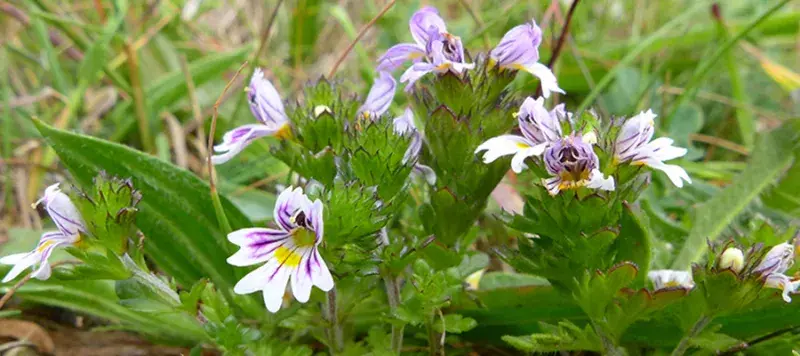1. Take a general overview of the Euphrasia plants in front of you. If they are generally fairly consistent in shape, size and colour the task will be somewhat easier. If there is a lot of variation however you will need to sample sufficient specimens to capture this variation.There may be more than one species involved and hybridisation is likely is such situations.
2. Select six plants from an internally consistent group. Avoid damaged plants, these often have their main stem missing and are worthless for identification purposes, and any plants which appear diseased (the yellow-brown rust Coleosporium rhinanthacearum is known to occur on Euphrasia and there are probably others). If possible take plants with well developed flowers and capsules. Without both of these it may be impossible to determine the species with certainty.
3. Carefully uproot the plants for preservation. Having sight of the roots is important when deciding on the lowest flowering node. If the population is small, or sampling is otherwise impossible it is best to take no sample at all rather than an insufficient one. However it is generally easier to make identifications with the sample laid out in front of one than crawling around trying to measure and search for key characters.
4. If you have the fortune (or perhaps misfortune) to have come across a mixed population or what may appear to be a hybrid swarm it is exteremely useful to attempt to capture the variation within the group. This is best done in the field by observing the area and trying to sample groups of plants which appear different from each other but reasonable similar within the group. Some characters to look for are:
- Hairs - long glandular hairs are usually easy to spot as are long eglandular ones.
- Lowest node of flowering.
- Corolla size.
- Blunt or sharp leaf toothing.
- Internode length.
5. Make sure that each group of plants is bagged separately. Mixing of specimens may make identification impossible.


